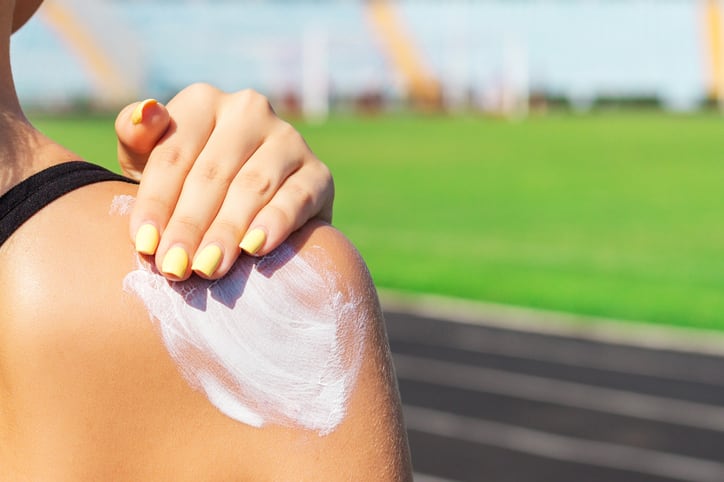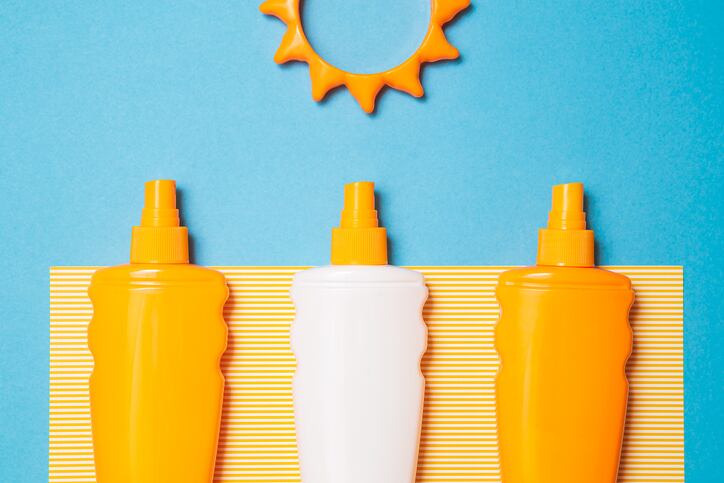Writing in three separate international patents (I, II and III), Beiersdorf said there were already a “large number of commercially available sunscreens” made using several different approved UV light protection filter substances, but many had disadvantages particularly around long-term stability or inclusion of nano substances.
Beiersdorf, therefore, had developed three formulation alternatives: an oil-in-water emulsion blending scleroglucan and hydrophilic UV filter substances; another oil-in-water emulsion blending scleroglucan and lipophilic UV filter substances; and a formulation made using photonic particles.
“The trend away from elegant paleness towards ‘healthy, sporty brown skin’ has been unbroken for years,” said Beiersdorf in its patent filings, maintaining demands for products offering UVA and UVB protection to avoid acute and long-term skin damage.
Multiple oil-phases for increased UV protection stability
Beiersdorf said hydrophilic and lipophilic UV filters – two of many protective options to integrate into cosmetic and sun protection formulas – often destabilized oil-in-water formulations and resulted in separation.
“Long-term stabilisation of oil-in-water emulsions with UV filters, even at elevated temperatures, is therefore desirable,” it wrote.
Beiersdorf had “surprisingly achieved” this in two formulations by using one or more oil phases, in addition to a water phase. Two of its international patents outlined blends that combined one or more oil-phase nonionic emulsifiers – lipophilic or hydrophilic UV filter substances – with scleroglucan.
“Scleroglucan is easily soluble in water and can be used as a thickener. The use of scleroglucan in cosmetic emulsions is known per se to the person skilled in the art, but the prior art could not point the way to the present invention,” it wrote.
Beiersdorf said scleroglucan should be used at levels of 0.001 to 5% by weight, ideally between 0.1 and 1% by weight. The lipophilic or hydrophilic UV filter substances then had to be integrated at levels of 2-4% by weight of the total formula and could be either UVA, UVB or broadband filters.
Beiersdorf said the emulsions produced could be used in ointments, creams, low-viscosity lotions, sprays or even integrated into plasters and cloths as an impregnation medium.
Additional skin care actives, such as vitamins, aloe vera and amino acids could also be used in the formulas.
Photonic particles to address nano-particle ‘fears’
In its third international patent, Beiersdorf outlined a sunscreen alternative made using photonic particles to provide an alternative to organic and nonorganic UV filter compositions that “repeatedly leads to discussions with regard to health compatibility”.
“Fears reported that organic UV filters could be absorbed into the body through the skin. The inorganic UV filters, which are usually used in particle sizes of 20-50 nm [nanometers] triggered the same fears in the ‘nano-particle’ discussion. Whether such fears are justified at all and, if so, under what conditions, can remain open within the scope of the present disclosure. The fact is that there has long been a desire for alternative solutions for cosmetic UV protection,” Beiersdorf wrote in its patent filing.
“For some years now, the use of photonic particles has been considered as a possible alternative. Such particles usually have dimensions of 500 nm to 100 μm and are intended to protect against harmful radiation through appropriate reflection and scattering of the UV light.”
However, the “particular disadvantage” with the way these photonic particles had been used in the past was the size of such particles since this meant they were difficult to incorporate them into cosmetic preparations in a stable manner and in a way that ensured even distribution on the skin.
What Beiersdorf had therefore done was create a sunscreen containing monodisperse, spherical particles with a particle diameter of less than 500 nm, blended with one or more non-volatile and volatile components that were liquid at room temperature.
Post-application, the volatile compounds evaporated leaving the non-volatile and photonic particles to form a very thin protective film on the skin, Beiersdorf explained.
Importantly, each formulation contained photonic particles with a uniform particle size, it said; this then related to different protection levels against UV and visible light and could be layered on the skin.
Beiersdorf said it was also advantageous to incorporate UVA and UVB filters approved for cosmetics in the EU and ensure the sun protection factor (SPF) was equal or greater to six.
(I) WIPO International Patent No. WO/2020/239404
Published on: December 3, 2020. Filed on: May 11, 2020.
Title: “Cosmetic o/w emulsion with scleroglucan and hydrophilic UV filter substances”
Inventor: Beiersdorf AG – K. Piradashvili, T. Raschke and L. Peschke
(II) WIPO International Patent No. WO/2020/239403
Published on: December 3, 2020. Filed on: May 11, 2020.
Title: “Cosmetic o/w emulsion with scleroglucan and lipophilic UV filter substances”
Inventor: Beiersdorf AG – K. Piradashvili, T. Raschke and L. Peschke
(III) WIPO International Patent No. WO/2020/244885
Published on: December 10, 2020. Filed on: May 8, 2020.
Title: “Cosmetic sunscreen with photonic particles”
Inventor: Beiersdorf AG – A. Goulet-Hanssens, A. Bleckmann and J. Zippel




